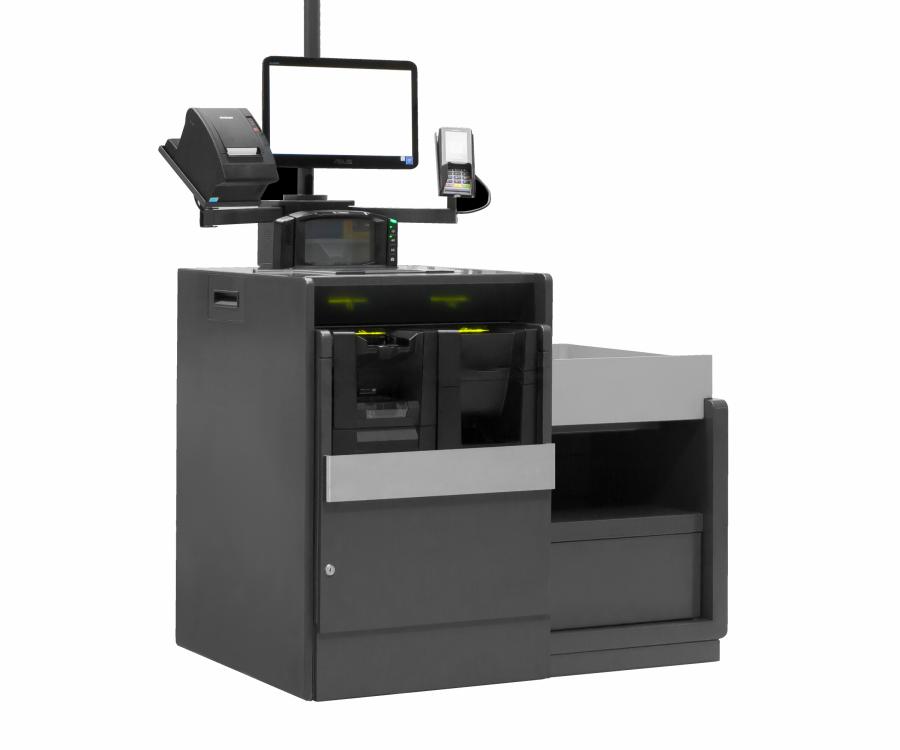
Honeywell’s new Stratos 2700 series hybrid bioptic scanner excells in scan performance and cashier swipe speed of common and difficult-to-read 1D linear bar codes, whilst offering fully integrated 2D scan functionality to address emerging trends like mobile couponing and e-loyalty.
The primary task for a bioptic scanner is to get customers through the checkout area quickly. Introduced into grocery stores in the late 1980s, the core scanning technology of the device has not changed much. The only solution robust enough to meet all the needs of high volume and high pass-through checkout in a cost effective manner has been the multi-line laser based scanner. The multitude of omnidirectional laser lines provide the best scan zone to allow the cashier to rapidly pass products through the scan zone.
Although 95% of all products scanned at checkout today are printed 1D bar codes, there is no debate that 2D imaging technology is also required to keep retailers up-to-date with industry trends like “mobile bar codes”. Printed loyalty cards, coupons and gift cards are increasingly migrating to electronic 2D bar codes that are rendered on mobile phones. These codes cannot be scanned by laser scanners.
When designing the next generation bioptic scanner, we evaluated the various challenges of checkout and the trade-offs between a full imaging device and a hybrid solution. The conclusion was that full imaging bioptic is not the ideal solution for retailers today.
An imaging scanner is really a camera that captures a whole image at once. This means that fast swipe movement of products can create a blurry image when the movement exceeds the camera’s tolerance for motion. For a bar code scanner, the consequence is loss of productivity, since the cashier will need to repass the product, often with a slower motion until they are able to achieve a successful scan. On the contrary, laser scanners only look at a single dot of information at any one time and its tolerance for motion far surpasses any human’s ability to create blur.
If a full imaging device is tweaked in an attempt to optimize 1D bar code reading, there is often a loss in other areas, such as field of view, motion tolerance or scan performance of ‘difficult to read’ codes. It is also likely to sacrifice scan performance of mobile and 2D codes.
Honeywell conducted in-house testing which shows that swiping products at the cashier average speed of 6 feet per second (almost 2 meter per second) can lead to an 18% decrease in first pass read rate with imaging technology. Essentially, the cashier will need to execute a product re-pass for 18% of the basket of goods. Cashiers will need to be retrained to slow down their swipe speed for specific bar codes, which is the opposite of how cashiers are trained today. The outcome is a less intuitive scanner which requires cashier training. The end result is checkout productivity loss.
If scanning mobile bar codes or 2D codes on products is expected to be a requirement during the lifetime of the bioptic scanner, retailers now have the option to choose a high performance hybrid solution. It delivers best in-class scan performance for the bulk of operations and provides an integrated imager for secondary scanning.
If you are interested to learn more about the new Stratos bioptic series, its scan performance, the integrated bottom-of-basket camera technology, or how the Stratos 2700 addresses health and safety concerns for your in-store operators, please do not hesitate to contact us. Our in-house retail experts and specialized channel partners are available to answer your questions. Go to www.honeywellaidc.com for more information.










